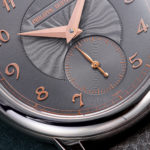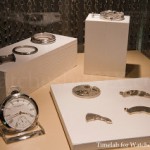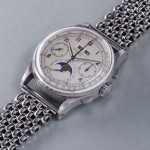Happenings at the Geneva Auction Season Fall 2023
A handful of big numbers and unexpected guarantees.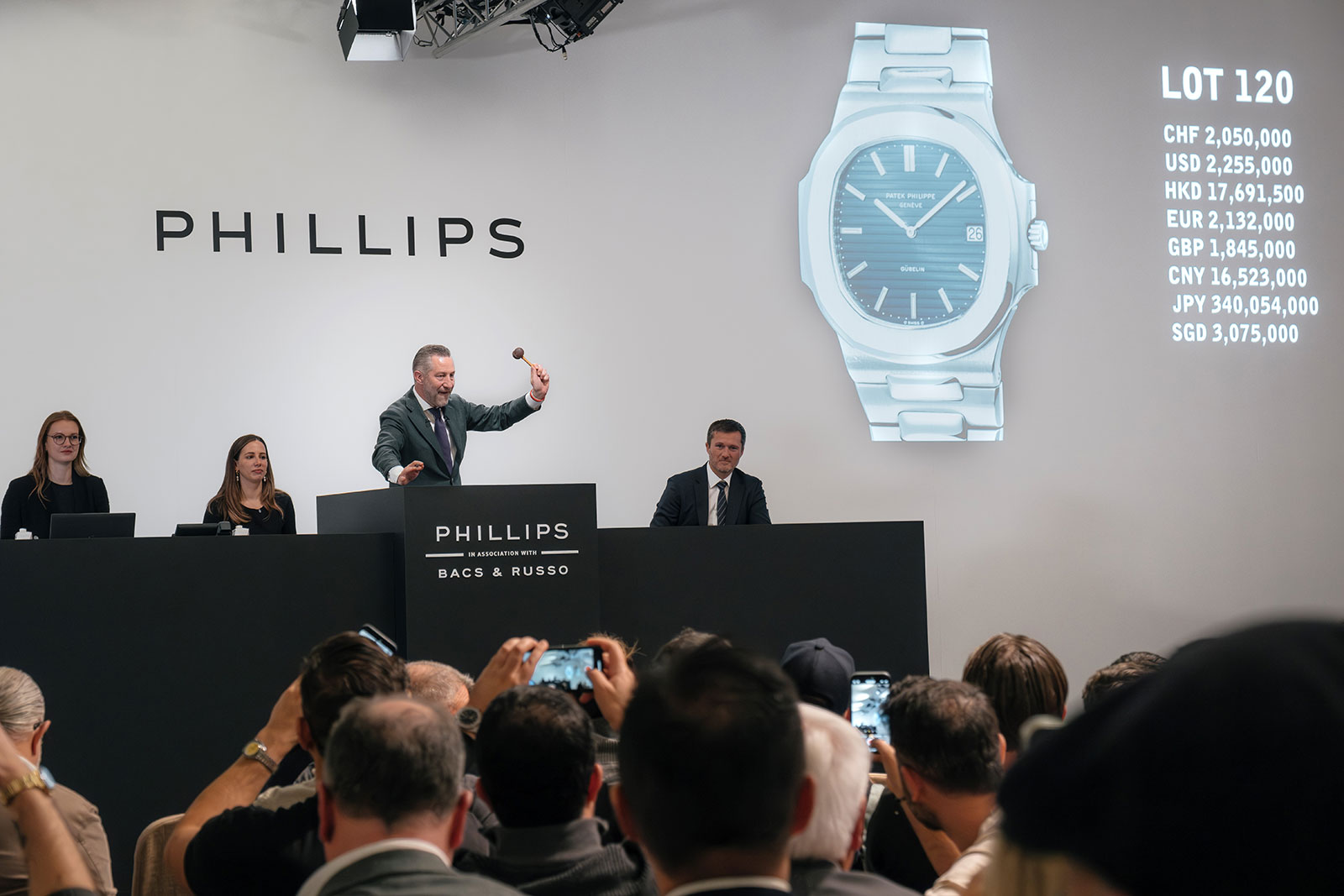
Regarded as a bellwether of the market, the Geneva auction season just concluded with the main players – Phillips, Christie’s, Sotheby’s, and Antiquorum – having staged their sales over four days.
Several records were set over the season, including CHF2.1 million for an immaculate Rolex ref. 6062 triple calendar in steel at Phillips, and CHF2.2 million for the George Daniels Millennium also signed by Roger W. Smith, both including fees.
Trending one way
Despite the record holders, the tone of the season was set by moderating or even weak prices. This was already evident with the most faddish of the “hype” watches last season six months ago. The May auctions saw prices for such watches gap down substantially, reflecting a new reality. Now the same appears to be happening for independent watchmaking – a good thing in my view as it will hopefully shake out the opportunists and no-hopers.
The Roger W. Smith Series 2 hammered for CHF400,000 at Phillips (or CHF508,000 with fees), which is below the current retail price for the model and a third below the price of the lower-priced Series 1 that sold in the same venue in May 2023.
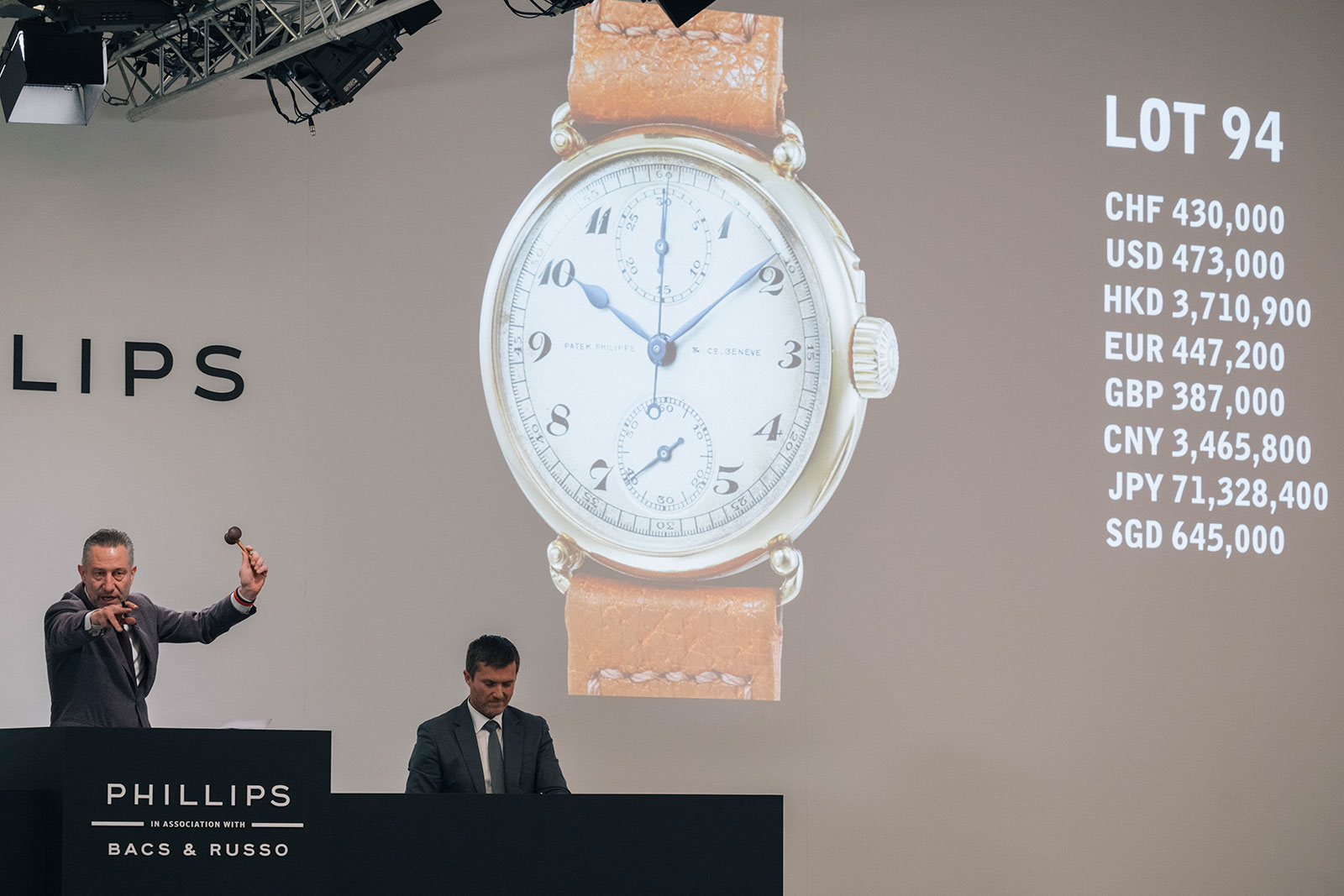
The Phillips saleroom at La Reserve. Image – Phillips
This phenomenon was not unique to Roger W. Smith, with prices gapping down for significant independents like F.P. Journe and Voutilainen. However, these brands remain buoyed by their relative reasonable retail prices, which still remain below recent auction valuations. Even if some examples of the F.P. Journe Resonance, for instance, are now almost half off their peak prices, they are still many multiples of the retail price.
One reason for the continued market weakness is something that was clear in past sales, even when results were stronger – the air is thin at the top and bidders are mostly known. The record-setting result for the Daniels Millennium, for example, was achieved by a familiar face in the room bidding against a phone bidder represented by Geoff Hess of Sotheby’s New York office. The former won the watch, and while the phone bidder was anonymous, insiders had a good idea of who it was.
Interestingly, although independent watchmaking now makes up a hefty portion of each auction, the members of the trade specialising in the genre are sparse. Majority of the watch dealers in every auction were vintage specialists, including prominent figures like Davide Parmegiani. In the salerooms, the only notable secondary dealer with a specialisation in independent watchmaking was Shawn Mehta of Watch4moi.
The paucity of trade underlines the fact that independent watchmaking as a “thing” is relatively new, and has unproven longevity. In contrast, vintage watch collecting has been mainstream for decades.
A sure thing
Practically everyone in the trade turned up at Christie’s Passion for Time, a single-owner auction of watches belonging to Mohammed Zaman, an entrepreneur from Oman who amassed a substantial collection of important watches, including the Rolex ref. 6062 “Stelline” that once belong to airline chief Gordon Bethune.
The sale saw several records set, however, it became a trending headline for another reason: the manner in which it unfolded, namely a late start and last-minute guarantees for the entire sale. None of that would have been news in an art auction but instead generated lots of chatter in the snow globe that is horological social media. As a result of the last-minute guarantees, the estimates were revised to reflect the respective guaranteed values as a new low estimates.
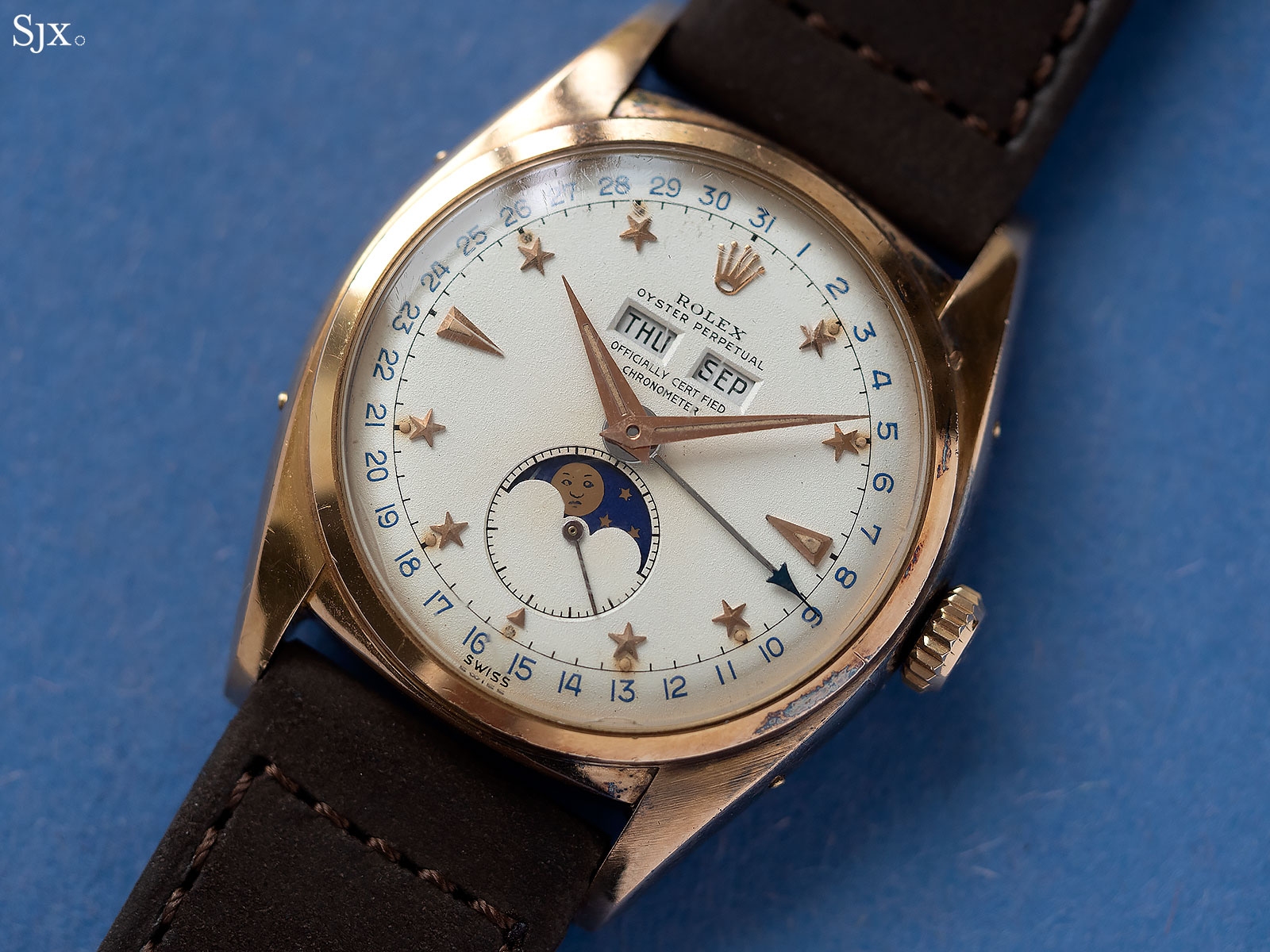
The ref. 6062 “Gordon Bethune”
A guarantee means the lot or entire auction will sell at the guaranteed sum, providing the seller certainty while transferring the risk to the guarantor. With a guarantee, any bids below the guaranteed sum don’t matter because the lot will sell for the guarantee come what may.
Such undertakings are either in-house or third party: the former refers to a guarantee underwritten by the auction house while the latter means the risk is borne by someone else, usually an investor rolling the dice or a dealer supporting the market. The guarantees for the Christie’s sale were third party.
While uncommon in watch auction, guarantees happen frequently and regularly in art auctions, particularly at the highest levels of art collecting. Art insiders know that guarantees are a regular enough occurrence that a third to half of some of the biggest art auctions are guaranteed.
In the broader scheme of things, the guarantees that underwrote Mr Zaman’s collection were trivial. The total raised from Passion for Time was CHF37.9 million including fees. In comparison, the estate of David Rockefeller was guaranteed for a reputed US$650 million in 2018, while Microsoft co-founder Paul Allen’s estate was guaranteed to the tune of US$1.3 billion.
In fact, guarantees are substantial and frequent enough in art that back when Sotheby’s was still a public company, it sometimes provided in-house guarantees that were hefty enough to dent quarterly results and sink its share price.
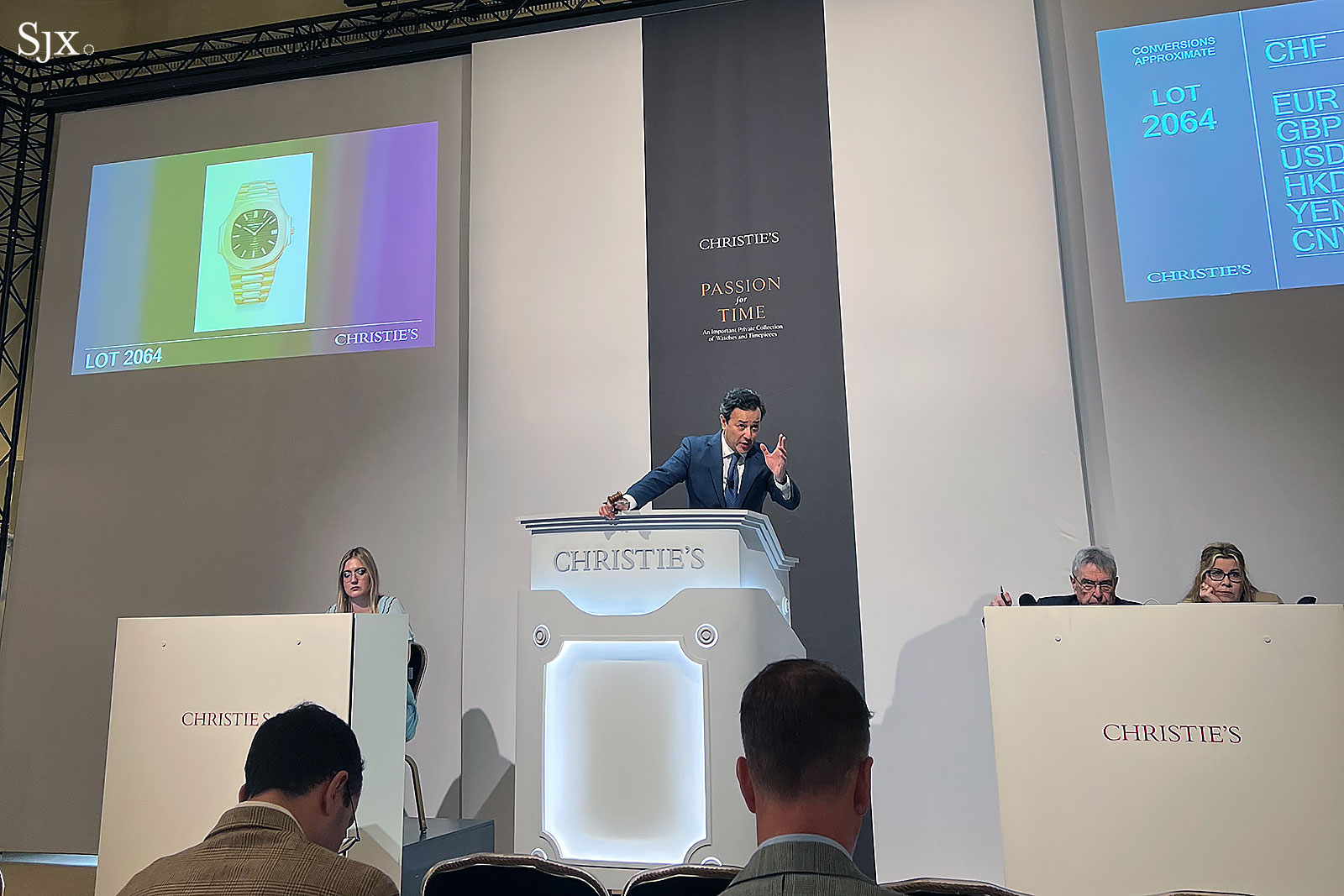
The Christie’s saleroom with Rahul Kadakia on the rostrum
The only notable aspect of the Christie’s guarantees was the fact that they were put in place at the last minute, probably explaining the 45-minute delay to the start of the sale. This eleventh-hour guarantee likely reflects the slowing market illustrated by the prior days’ sales. Interestingly, there was talk that the guarantor, or guarantors, of the sale had also guaranteed past Christie’s watch auctions.
The guarantees ensured a positive outcome for Mr Zaman. That perhaps explains why he was bidding at Christie’s sale later in the day, where he picked up a few six-figure lots, including the three-piece F.P. Journe Vagabondage set.
As a result of the guarantees, Mr Zaman will surely get paid. On the other hand, it is entirely possible that some of the highest profile lots this season sold in sales other than Mr Zaman’s will not be paid.
The outliers
Every season will include a few results that, on the surface, are difficult to comprehend. Christie’s, for instance, sold a seemingly ordinary Rolex Day-Date with a bloodstone dial for CHF327,000. Though the winner was a telephone, the underbidder was a dealer, who presumably felt he could sell it for more.
But it was of course no ordinary Day-Date, but instead one that was sold by Parisian jeweller Chaumet to King Hassan II of Morocco in 1979. And it was accompanied by a Chaumet certificate, matching Chaumet cufflinks, and presented in crisp condition with pristine hallmarks and Chaumet serial number.
That said, there were lots that remain mysteries even after much pondering. Phillips sold a Breguet ref. 3237 chronograph with a lapis dial for CHF146,000, or about 10 times the value of the same watch with a standard silvered dial.
While rare, maybe even incredibly and exceptionally rare, the ref. 3237 with a lapis dial is not unique. And dial aside, it is identical to the standard model with a stock Lemania calibre inside. Furthermore, it is merely a Breguet, with no connection to independent watchmaking or Daniel Roth.
This illustrates a fundamental truth of auctions: if there are two buyers who really want something, the seller will be happy.
Back to top.



